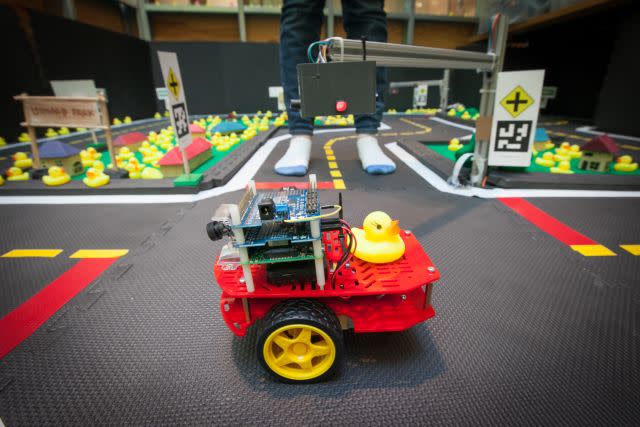A tiny town of rubber ducks is laying the groundwork for the next generation of self-driving cars

The squeaky toy ducks in the video above are cute and a little goofy. But the tiny cars under them might be the next big leap forward in self-driving vehicles.
Earlier this year, MIT’s CSAIL computer science lab offered a class called, seriously, Duckietown. The class’s immediate goal was to create a fleet of autonomous vehicles, quickly and on a budget, that could navigate a streetscape entirely on their own.
There is serious science behind Duckietown. MIT and Toyota have a $25 million deal to develop self-driving cars together, and Duckietown is an attempt to spend some of that money wisely, by testing a huge fleet of autonomous vehicles in ways that would be impossible with actual cars. “The real contention that we’re making with this class,” said CSAIL professor Liam Paull, “is that the scientific value of our Duckiebot is roughly equivalent to the scientific value of an autonomous car.”
In other words, the code that powers Duckietown’s tiny cars might one day propel your self-driving Prius.

Sign up for the Quartz Daily Brief, our free daily newsletter with the world’s most important and interesting news.
More stories from Quartz:

 Yahoo Finance
Yahoo Finance 